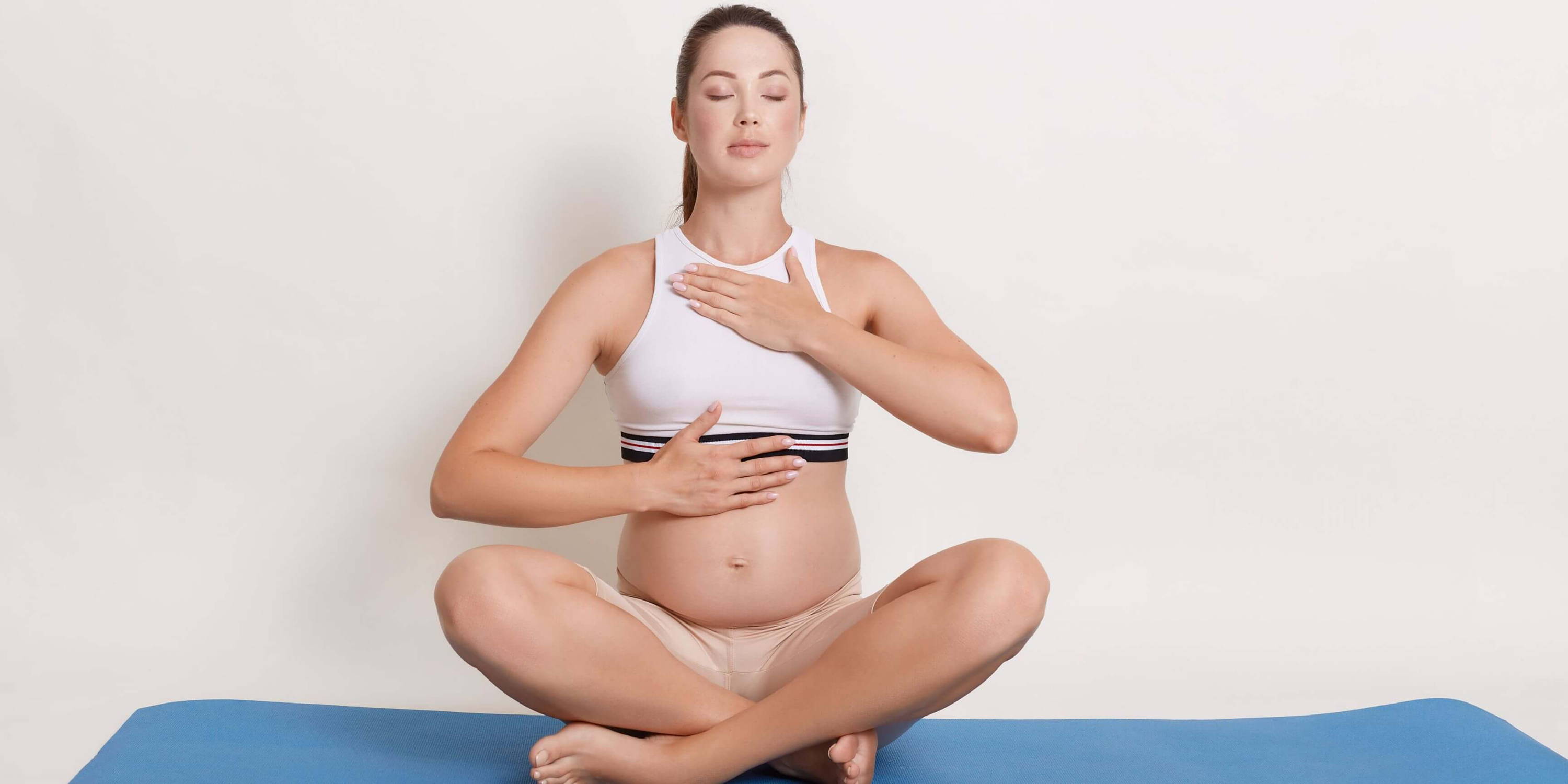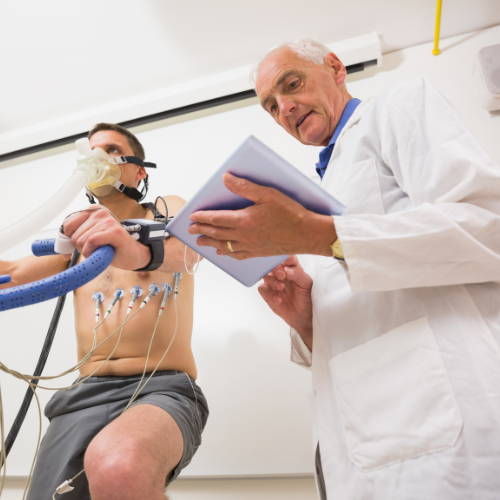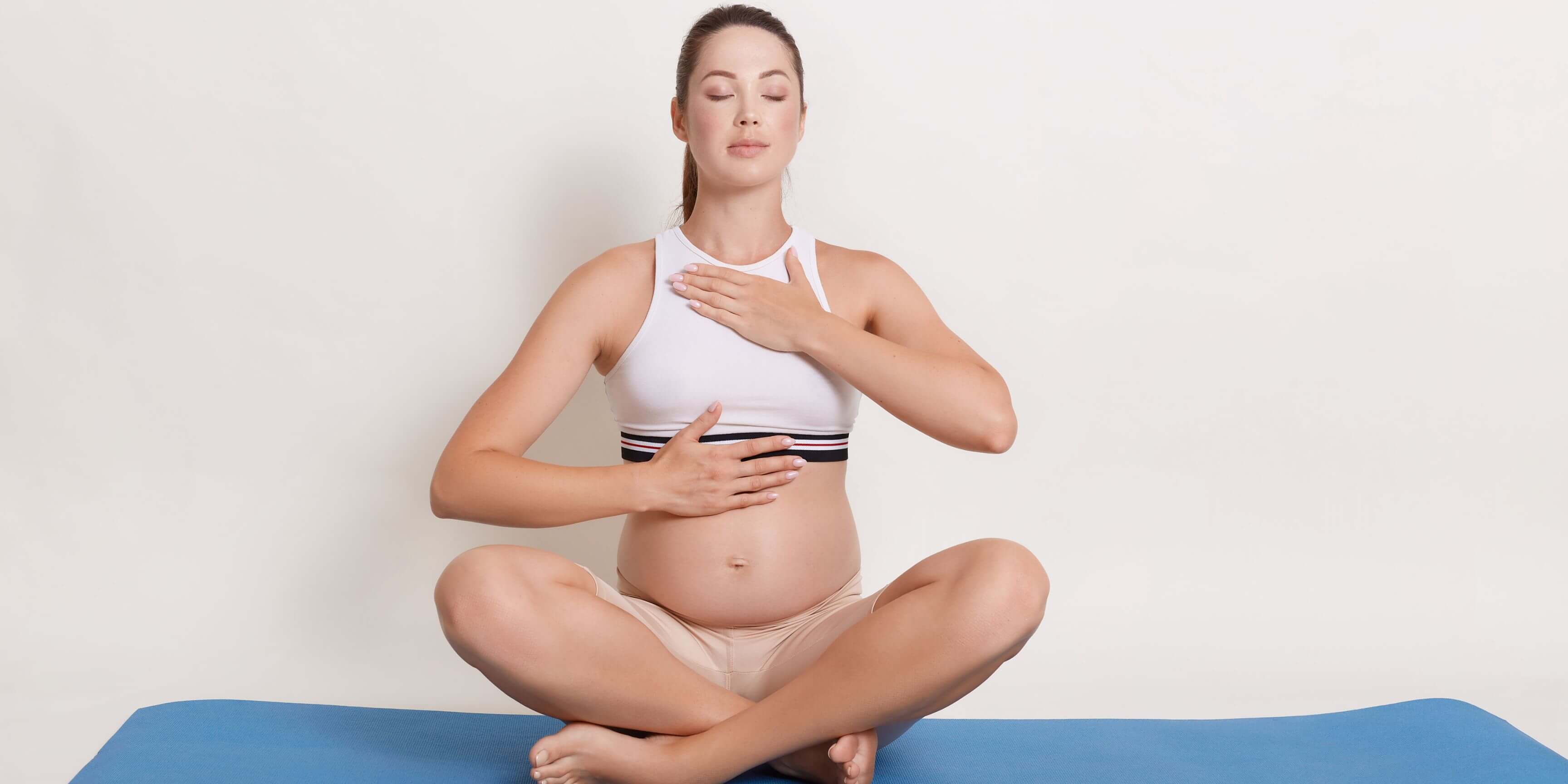Cuidado del embarazo mediante una mejor respiración
Cuidado del embarazo mediante una mejor respiración
16 de agosto de 2023
Descubra los problemas comunes durante el embarazo y cómo las técnicas de respiración óptima pueden mejorar la atención durante el embarazo, ofreciendo información para fomentar un viaje más saludable hacia la maternidad.

El embarazo puede ser una de las fases más hermosas de la vida de una mujer. ¡Es un espectáculo maravilloso ver el bulto creciente! Una futura madre cuida de su pequeño incluso antes de conocerlo. Todas las mujeres embarazadas deben hacer todo lo posible para garantizar que sus bebés reciban toda la atención y protección que necesitan.
Una madre pasa por lo bueno y por lo malo durante todo el embarazo para asegurarse de que el bebé esté perfectamente bien cuando respira por primera vez en el mundo exterior.
"Come bien, haz ejercicio, descansa y mantente relajada" son los consejos habituales que recibe toda futura madre. Pero hay algo que quizás te hayas perdido.
Entregas mortales
En cambio, Estados Unidos continúa observando cómo otros países mejoran mientras él se queda atrás. Hoy en día, este es el lugar más peligroso del mundo desarrollado para dar a luz.
Identificar todos los hospitales que no brindan la atención recomendada es casi imposible. No existe un sistema nacional de seguimiento de las complicaciones del parto. Las madres cuentan historias desgarradoras de supervivencia, pero a menudo no tienen idea de si sus médicos y enfermeras hicieron algo mal”.
¿Qué le sucede a su respiración cuando queda embarazada?
Problemas comunes durante el embarazo
Vuelva a aprender formas de respirar mejor
La salud de una futura mamá es importante y el ejercicio más sencillo es respirar profundamente pero con facilidad y con el menor esfuerzo posible. A través de una respiración adecuada, una madre puede ser a la vez cuidadora y guardiana del bebé que está acurrucado dentro de ella.
Debido a que impulsa el sistema nervioso, la forma en que respira influye en la forma en que se siente. Al practicar la respiración óptima , puede mejorar el suministro de oxígeno a su bebé las 24 horas del día. Por lo tanto, la Respiración Óptima mejora su sensación de relajación y control.
Presentamos el curso de embarazo de The Optimal Breathing Academy
Una respiración óptima la ayuda a mantener la calma, la concentración y respirar mejor durante el trabajo de parto y ayuda a prevenir una respiración no saludable como la hiperventilación o contener la respiración, todo lo cual podría provocar mareos, tensión y fatiga.
Ventajas de una respiración óptima
Aunque generalmente es adecuado para todas las personas en cada etapa de la vida practicar la Respiración Óptima, es vital durante el embarazo por muchas razones:
-
Promueve un parto más fácil
Miedo, ansiedad, afán excesivo, tensión, incluso pueden aumentar, pero puede producirse felicidad excesiva.
Una montaña rusa de emociones por la que tiene que pasar una mujer durante el embarazo. Estas emociones están en su punto máximo durante el trabajo de parto. La respiración óptima ayuda a mantener la compostura. De hecho, comenzamos a ver cómo la respiración óptima ayuda a atravesar cada etapa del parto con facilidad. Se necesita un conjunto robusto de músculos abdominales para ayudar a expulsar al bebé y, con los pulmones débiles, podría resultar bastante difícil, ¡incluso potencialmente mortal para la madre, el bebé o ambos!
La respiración modelada es una técnica a la que los obstetras y expertos en partos se refieren a menudo. No es más que el acto de respirar a cualquier número de ritmos y profundidades posibles. Durante el embarazo, algunas mujeres prefieren respirar profundamente utilizando el diafragma para llenar de aire el abdomen. Otros prefieren una respiración ligera, inhalando lo suficiente para llenar el pecho.
Su objetivo como futura madre es encontrar patrones de respiración que tengan un efecto calmante y relajante. Debe respirar a un ritmo que no le cause falta de aire ni mareos. Esta capacidad se puede mejorar con un entrenamiento adecuado y para ello existen ejercicios específicos de desarrollo de la respiración en el curso de Embarazo .
Beneficios para el embarazo
¡Una mamá más feliz, más sana y más fuerte es el mejor regalo que le puedes dar a tu hijo!

Disfrute de la feliz transición del embarazo al
Maternidad
Aprenda formas naturales de superar el estrés, la depresión y la ansiedad posparto.
$99
Primeros pasos: práctica de 2 ejercicios de respiración sencillos
Ejercicio 1
Estos sencillos ejercicios le ayudarán en gran medida a garantizar que esté preparada para afrontar cualquier desafío que le depare la maternidad pendiente.
Ejercicio 2
Otro ejercicio que le ayudará a aliviar el parto es sentarse erguido cerca del extremo de la silla y mirar hacia adelante. Espere hasta el final de una exhalación natural y extiéndala girándola hacia los lados durante 2 segundos, luego regrese al centro y permita que entre una inspiración más profunda y sin esfuerzo. NUNCA la inhale.
Hazlo del otro lado y repite de un lado a otro, luego del otro, durante varios minutos hasta que te sientas más relajado.
Esto debería ser muy calmante y es lo que yo llamo Activar el Reflejo. Se muestra en varias otras formas de sentarse y acostarse a través de videos en nuestros cursos de Optimal Breathing Academy. Aunque Lamaze y Bradley pueden resultar útiles, no se trata de ellos.
Cosas importantes para recordar al hacer estos ejercicios
Pocas mujeres que han pasado por la maternidad pueden decir con certeza que no estaban ansiosas por el parto. Hay tantas historias, anécdotas, mitos y hechos en torno al momento en que un bebé llega al mundo que la mayoría de las mujeres embarazadas están ansiosas y preocupadas por esa fase.
Relájate y Respira!!!
Si se ha tomado en serio la Respiración Óptima durante su embarazo, permítame asegurarle que es posible que supere todo esto. Todo lo que tienes que hacer es recordar hacer tu tarea ANTES de dar a luz.
No espere hasta la hora de entrega. Para entonces, ya debería haberlo hecho (sin juego de palabras).
Todo lo que necesita en este momento es más oxígeno para usted y su bebé y, con suerte, para relajar sus músculos y su útero.
Respiración en la primera etapa del parto
Después de haber practicado los ejercicios del curso de la Academia con suficiente frecuencia, debería desarrollar una sensación intuitiva de dejarse llevar.
Piense que una onza de prevención = una libra de cura .
El resto puede variar a medida que avanza el proceso de parto. Esta enseñanza trata principalmente de repetir los desencadenantes de los reflejos, trabajar con la respiración para permitir que funcione de manera óptima, mantener la calma y dejarse llevar.
Cuando las contracciones sean lo suficientemente intensas como para que ya no puedas caminar o hablar sin hacer una pausa, activa los reflejos y permite que la respiración se ralentice extendiendo las exhalaciones lo mejor que puedas.
Cuando ya no puedas relajarte o te sientas tenso, da un gran suspiro, tan pronto como comiencen las contracciones. Inhale y, mientras exhala, libere todo el estrés (quede flácido de la cabeza a los pies). Centra tu atención en tu respiración. Inhale y exhale lentamente, por la nariz si es posible o por la boca si es necesario.
Deje que el aire fluya con un suspiro filtrado hasta OBW 3. Manténgalo así hasta que sienta una ligera hambre de aire, luego permita una inhalación reflexiva y relajante.
Experimente con el enfoque mental para relajar una parte diferente de su cuerpo con cada inhalación y exhalación sin esfuerzo.
Respirar de forma correcta, eficaz y eficiente no es una cuestión de elección sino una necesidad para las mujeres embarazadas o las madres de recién nacidos. Con nuestros cursos exclusivos diseñados para Embarazo y Postparto , podrás aumentar las probabilidades de abrazar esta nueva etapa de la vida con felicidad y tranquilidad o al menos con un mayor dolor y malestar atenuados.
Puede practicar este enfoque holístico durante el tráfico, los dolores de cabeza e incluso las tareas del hogar. Hazlos parte de tu rutina.
Una vez que seas “consciente de la respiración”, ¿qué tal si transmites esa sabiduría a otras mujeres embarazadas?
NOTA :

Disfrute de la feliz transición del embarazo al
Maternidad
Aprenda formas naturales de superar el estrés, la depresión y la ansiedad posparto.
$99

Conoce a Mike White
Conozca a Michael Grant White, el entrenador de respiración óptima y obtenga información práctica sobre el desarrollo de su respiración, su salud y su longevidad.

¿ Qué tan buena es tu respiración?
¿Quieres saber el futuro de tu salud y longevidad?
Artículos más populares

12 de abril de 2021

10 de febrero de 2022


Lograr niveles satisfactorios de ejercicio sin agravar el corazón existente.
Comprenda y explore EWOT: ejercicio con oxigenoterapia.
La respiración óptima
Kit de autodominio
Artículos sobre respiración y oxígeno
-
Respiración
-
Oxígeno
- El moho podría estar en su hogar ahora mismo. ¿Estás en riesgo?
- Venza el estrés laboral de la manera correcta
- El mal aliento causa asma: ¡esto es lo que debe hacer!
- Respiración óptima, autismo y desarrollo cerebral
- ¿Por qué respirar mejor? El mal aliento te enferma o te enferma aún más. Aprenda a respirar mejor ahora
- Cura tus problemas respiratorios con ejercicios de respiración
Conozca y trabaje con nuestros profesionales
Obtenga ayuda personal para mejorar su salud
y vitalidad.
Obtenga entrenamiento y orientación expertos de nuestros expertos en Respiración Óptima.
Si buscas contar con un experto en Respiración Integral, Voice Coach
o alguien que se especialice en ansiedad o depresión, no busque más.





